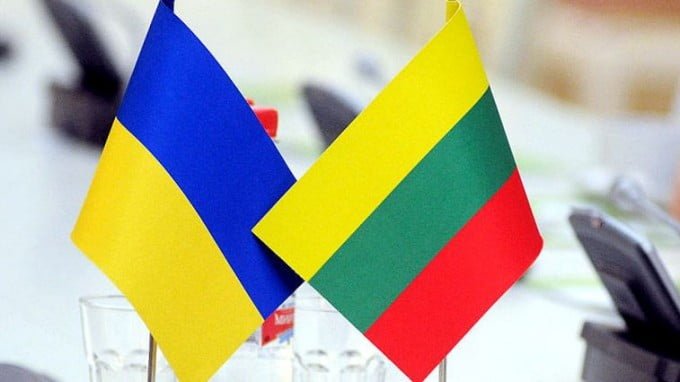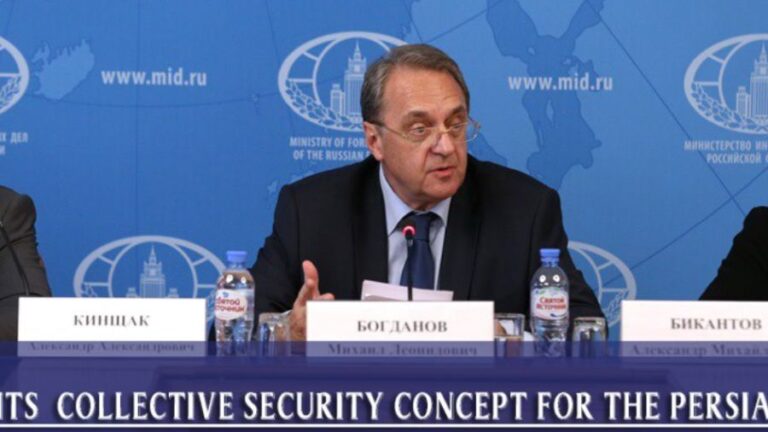Has a Multipolar CENTO Sprung Up in the South Eurasian Rimland?
The past couple of years have been marked by dramatic geopolitical changes triggered by the onset of the New Cold War, and while events such as the spree of urban terrorism popularly known as “EuroMaidan” and Russia’s anti-terrorist intervention in Syria are well known, there are other major shifts which have yet to generate considerable public attention but have been no less consequential. Chief among this category is the surprising emergence of the South Eurasian Rimland as a unique geopolitical force representing the partial institutional revival of the Old Cold War-era grouping of Turkey, Iran, and Pakistan, albeit for contemporary and constructive purposes.
The Central Treaty Organization (CENTO) was a largely ineffective and unknown military alliance which was also referred to as the Baghdad Pact, and it brought together the three aforementioned states, Iraq, and the UK in a mutual defense arrangement from 1955-1979. CENTO was aimed against the USSR, and thus didn’t spring into action during the 1965 and 1971 Indian-Pakistani Wars, or at the time of the 1974 Turkish invasion of Cyprus. It received its final death blow with the 1979 Islamic Revolution and Iran’s subsequent withdrawal from the British-organized bloc, but the legacy of three of the largest, most powerful, and influential Muslim civilizations-states united under a single institutional banner provided the precedent for their 21st-century New Silk Road integration in the emerging Multipolar World Order.
The South Eurasian Belt
Intra-Regional Relations:
Before describing how the South Eurasian Belt (SEB) has secured high-level strategic relations with Russia and China, it’s necessary to start off by saying a few words about the cooperative engagement between each of them. Pakistan and Turkey have always been close ever since the former’s independence, and Ankara is one of Islamabad’s privileged military partners. Importantly, Turkey also solidly stands behind Pakistan when it comes to Kashmir.
As for Iran, it too enjoys very friendly ties with Pakistan and also supports it with Kashmir, despite the relationship between the two neighbors going through various stages of development ever since the 1979 Islamic Revolution. Nevertheless, ties between the two are pretty good nowadays. Both sides are cooperating on a pipeline and also have shared security threats drawing from the US’ War on Afghanistan and ongoing occupation, Daesh, and cross-border Baloch terrorism.
Concerning Iran and Turkey, these two states have moved remarkably closer over the past year ever since the failed pro-American coup against President Erdogan. Prior to that, Iran recognized the opportunity that Turkey could provide for it in possibly exporting goods and energy across its territory to Europe in the post-sanctions environment, though this vision still has a long way to go before becoming reality. Just like with Pakistan, Iran also shares similar transnational threats as Turkey does, most notably as it relates to Daesh and Kurdish terrorist groups.
Finally, one of the most visible elements linking together these three countries is their Islamic form of governance. Pakistan officially became an Islamic Republic in 1956, while it took Persia over two more decades before it underwent its Islamic Revolution and became Iran in 1979. Turkey, while constitutionally a secular country, was traditionally an Islamic Caliphate, and even today, President Erdogan celebrates this historical memory in order to appeal to his conservative base. For all practical intents and purposes, Turkey is essentially an Islamic Republic in all but name at this point.
Extra-Regional Relations:
In parallel with strengthening its intra-bloc integration, the SEB has also pursued high-level strategic relations with Russia and China, though through a bilateral basis with each individual Eurasian leader as opposed to a bloc-on-bloc basis.
China
The simplest interlinked series of relationships that each of the SEB’s component states have is with China, as these are all predicated in one way or another on Beijing’s One Belt One Road global vision of New Silk Roads.
The $50 billion China-Pakistan Economic Corridor (CPEC) is the flagship project of this worldwide initiative and is naturally the most significant project in their relationship.
As for China and Iran, efforts are underway to connect the two via a new high-speed rail line in Central Asia, which could consequently be expanded all the way to Turkey and thenceforth to the EU.
Pursuant to that, China has a deep-seated interest in developing its full-spectrum relations with Turkey, which complements Russia’s ongoing efforts to sustain Ankara’s Eurasian pivot.
Russia
Like with China, Russia also has a grand economic strategy in mind with each of the three SEB countries, but Moscow expands upon Beijing’s commercial focus to introduce military-diplomatic dimensions to its policy blueprint.
Starting with the economic element of Russia’s SEB strategy, Moscow is simultaneously pursuing what the author has previously termed as the “Levantine Line” maritime trade route with Turkey, the North-South Corridor with Iran, and has displayed pragmatic interest in CPEC.
Concerning the military-diplomatic dimensions, Moscow is leveraging the Double Tripartites of Russia-Iran-Turkey and Russia-China-Pakistan in seeking to give a boost to the conflict resolution processes in Syria and Afghanistan, respectively.
Buckling The Belt
The SEB is clearly crystallizing into a pivotal geopolitical entity given its ongoing intra-regional integration and the parallel progress that has been made with each component states’ relations with Russia and China. As crucial as these complementary processes have been, there are two multilateral factors which need to be taken into account and expanded upon in order to ‘buckle the belt’ and secure the SEB’s organizational solidarity and role in the emerging Multipolar World Order.
The ECO:
The first one of the two is the Economic Cooperation Organization (ECO) which formed in 1985 between the three former CENTO members of Pakistan, Iran, and Turkey. It soon expanded to include Azerbaijan, the five former Soviet republics of Central Asia, and Afghanistan in the early 1990s. The goal of the organization is to enhance the economic connectivity between each of its signatories, and it’s supposed to lay the groundwork for a series of free trade deals between them sometime in the future.
This perfectly overlaps with the economic goals of the Eurasian Union (EAU), which has thus far seen Russia, Belarus, Armenia, Kazakhstan, and Kyrgyzstan do the exact same thing amongst themselves and with considerably more success in a much shorter period of time. The latter two Central Asian members are thus doubly important to the EAU and ECO since they form the geographic bridge between both organizations and could be used to bring them closer together in the future.
Russia has already expressed a desire to seal free trade agreements with both Turkey and Iran, the two largest economies in the ECO, so it’s only logical that it would eventually seek to do the same with Pakistan after some time. In any case, it can be surmised that Moscow wouldn’t have any objection to reaching a similar agreement with Islamabad as part of an EAU-ECO FTA, especially since the South Asian state is the “Zipper of Pan-Eurasian Integration” at the “Convergence of Civilizations”.
The SCO:
The ECO is a broad-based platform for economic integration, but what it’s missing is the political framework which can give it more substance. The Shanghai Cooperation Organization (SCO) could fill this need, and the synergy between both groups can help both of them achieve their shared objectives.
Iran wants to apply for formal membership with the SCO while Turkey is still only a Dialogue Partner, but following Pakistan’s official admittance to the group later this year, Islamabad can be expected to lobby on its trusted partners’ behalf in helping to fast-track their integration.
Moreover, there’s already been talk of an SCO free trade area, and recalling how the ECO is the institutional forerunner of this initiative between the SEB and Central Asia, it could easily be counted upon to assist in this larger regard.
In fact, the ECO represents the western extent of the SCO’s projected enlargement, so there’s clearly a motivation for the latter to build upon the gains of the former in bringing these two groupings together for the ultimate win-win arrangement, and Pakistan is the key driving force for this to happen.
Transregional Scope
Altogether, the SEB abuts a variety of regions and spans an impressive geographic scope which makes it undeniably attractive to both friends and foes alike. Multipolar partners such as Russia and China are interested in bolstering this belt’s stability and using it as a springboard for their influence projection further afield, while unipolar actors such as the US are uncomfortable with just how pivotal of an advantage the SEB would bestow to Moscow and Beijing and consequently desire to sabotage it through Hybrid War.
The impetus for both sides’ contradictory policies towards the SEB is revealed by the specific significance of this grouping’s geography. From west to east, Turkey borders the Black and Mediterranean Seas; Iran is in between the Caspian Sea and Persian Gulf; and Pakistan touches the Arabian Sea and Indian Ocean. In terms of regions, this equates to the Balkans and Levant; Arabian Peninsula and GCC; and India and the rest of SAARC, respectively.
Additionally, as was earlier mentioned, the SEB is also an irreplaceable actor in cleaning up the US’ ‘Reverse Brzezinski’ geopolitical messes. Turkey and Iran are inseparable in bringing peace to Syria and even Iraq to an extent, while Iran and especially Pakistan are absolutely indispensable in doing the same to Afghanistan. Analyzed from this angle, the SEB is perhaps the most instrumental set of actors for resolving the world’s worst ongoing wars, with Iran powerfully serving as the geographic-institutional fulcrum between all three conflicts.
Concluding Thoughts
Amidst the dynamic changes that have taken place since the onset of the New Cold War in late-2013, one of the most unbeknownst to the global public has been the discrete convergence of Pakistan, Iran, and Turkey into a multipolar CENTO, otherwise referred to by the author as the South Eurasian Belt.
Instead of functioning as the pro-Western containment bloc that they were intended to be during the Old Cold War, these three states nowadays reversed their geostrategic significance and have thus enabled Russia and China to escape the US’ trans-Eurasian containment noose that’s been tightening around their necks since 1991.
The challenge ahead is for the SEB to sustain and strengthen its integration, as well as to avoid the Hybrid War traps that the US is setting for it with the Kurds, Daesh and Baloch – to say nothing of the plots that it wants to engineer between each of the bloc’s constituent members and their partners.
So long as the strategic South Eurasian Belt of Islamic states remains united and succeeds in overcoming the formidable obstacles that the US plans to confront it with, then it can serve as one of the cornerstones of the emerging Multipolar World Order and become the quintessential Eurasian pivot.
By Andrew Korybko
Source: Katehon







